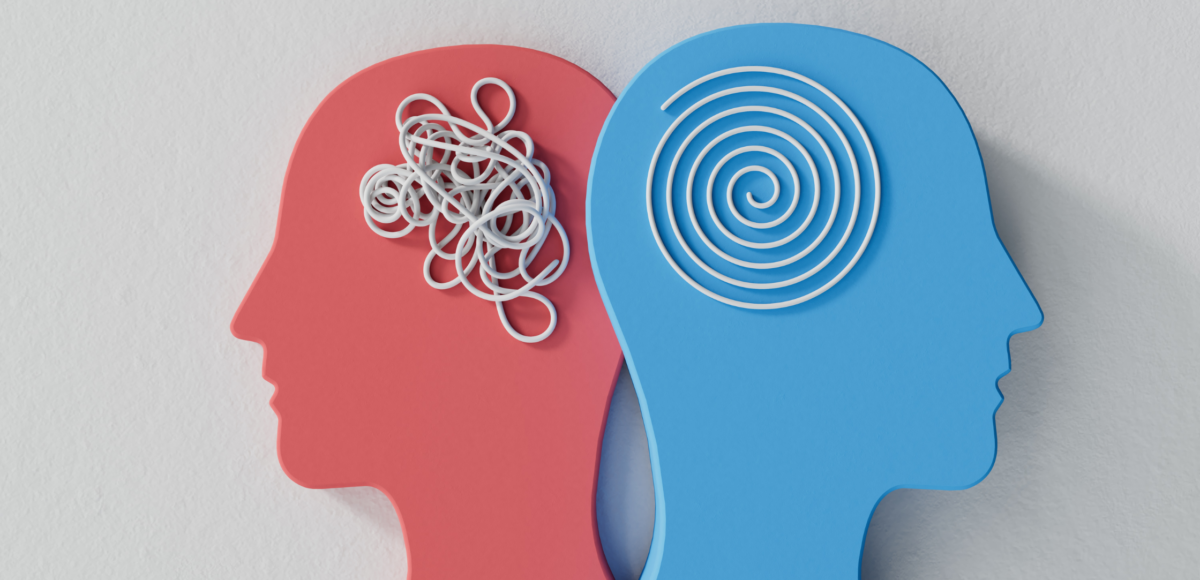
About Your Brain
This post on the Brain is written by Marie Wiliszewski
Key Insights
- The Brain Has Two Sides
- Communication Between the Two Sides is Essential
- Stress Can Disrupt Brain Communication
- Grounding Techniques Help Restore Balance
- Self-Compassion is Key
The brain does a lot for us on a daily basis
The brain processes a lot of information that we learn in school, work, and what others say to us. Our brain also has a role in processing emotions. Disney’s Inside Out is a great way to understand how emotions impact us and where they are located. Yes, the brain is a complex organ and does a lot of complex work.
This post will break down the brain and what happens when it feels like our brain does not work.
In Dan Siegel’s book The Whole-Brain Child, he talks about how our cerebrum can be split into two parts: the logic brain and the emotion brain. The logic brain is where logical thinking and processing can happen, think the math side and problem-solving. The other side of part of our cerebrum is the emotion brain, think Inside Out. Both sides of the encephalon play an important role in our functioning. Both sides of the brain are able to communicate with the other side. When both sides are able to talk to each other, we are able to go about our lives and think critically while experiencing emotions.

Then something can happen, good, bad, or ugly, to make both sides of the brain not be able to communicate. Dan Siegle mentions that one side of the cerebrum will overpower the other. This may look like a person becoming more logical and typing to problem-solve the issue. Or the emotion side of the cerebrum may be heightened. This may look like an individual experiencing heightened emotions or having a panic attack. No matter which side of the encephalon takes over, both sides of the brain are not able to communicate with each other. When this happens, it is hard for us to take in new information, process it, or even try to understand others’ emotions.
What do we do when this happens? The best thing to try and have both sides of our encephalon regain communication with each other is to try and ground ourselves. One way to do this is to engage in mindful breathing exercises. There are plenty out there to choose from, but when you do engage in this, be sure to breathe to the diaphragm (or your stomach). That may look like your stomach is enlarged. When you exhale, breathe out through your mouth. It’s helpful to think that you are fogging up a mirror. Another helpful coping skill is to ground by color. Try to find your favorite color in your environment, or find the different colors of the rainbow.

No matter what you do, your brain is playing a huge role in your life. The next time you are experiencing a big emotion or only able to engage in problem-solving mode, try to engage in some type of grounding activity. Be kind to your brain since it has a lot of roles to balance.
Perfectionism often accompanies New Year’s resolutions, but striving for flawlessness can lead to early burnout and disappointment. Dr. Kristin Neff, an American psychologist, defined self-kindness as one of the three components that makes up self-compassion. Self-kindness encourages us to be warm to ourselves when we notice our shortcomings, instead of criticizing ourselves. Instead of berating yourself for missing a workout or indulging in a treat, acknowledge the slip-up without judgment and refocus on your intentions.
When you’re feeling critical, pause and ask yourself, “What would I say to a friend in this situation?”
In Summary
The cerebrum has two sides: the logic brain (problem-solving, reasoning) and the emotion brain (feelings, reactions). Ideally, both sides communicate effectively, allowing us to think critically while experiencing emotions. However, stressful events can disrupt this balance, leading one side to overpower the other—either overanalyzing or becoming emotionally overwhelmed. When this happens, grounding techniques like mindful breathing and focusing on colors can help restore communication between the two sides.
Check out our other popular blog posts:
